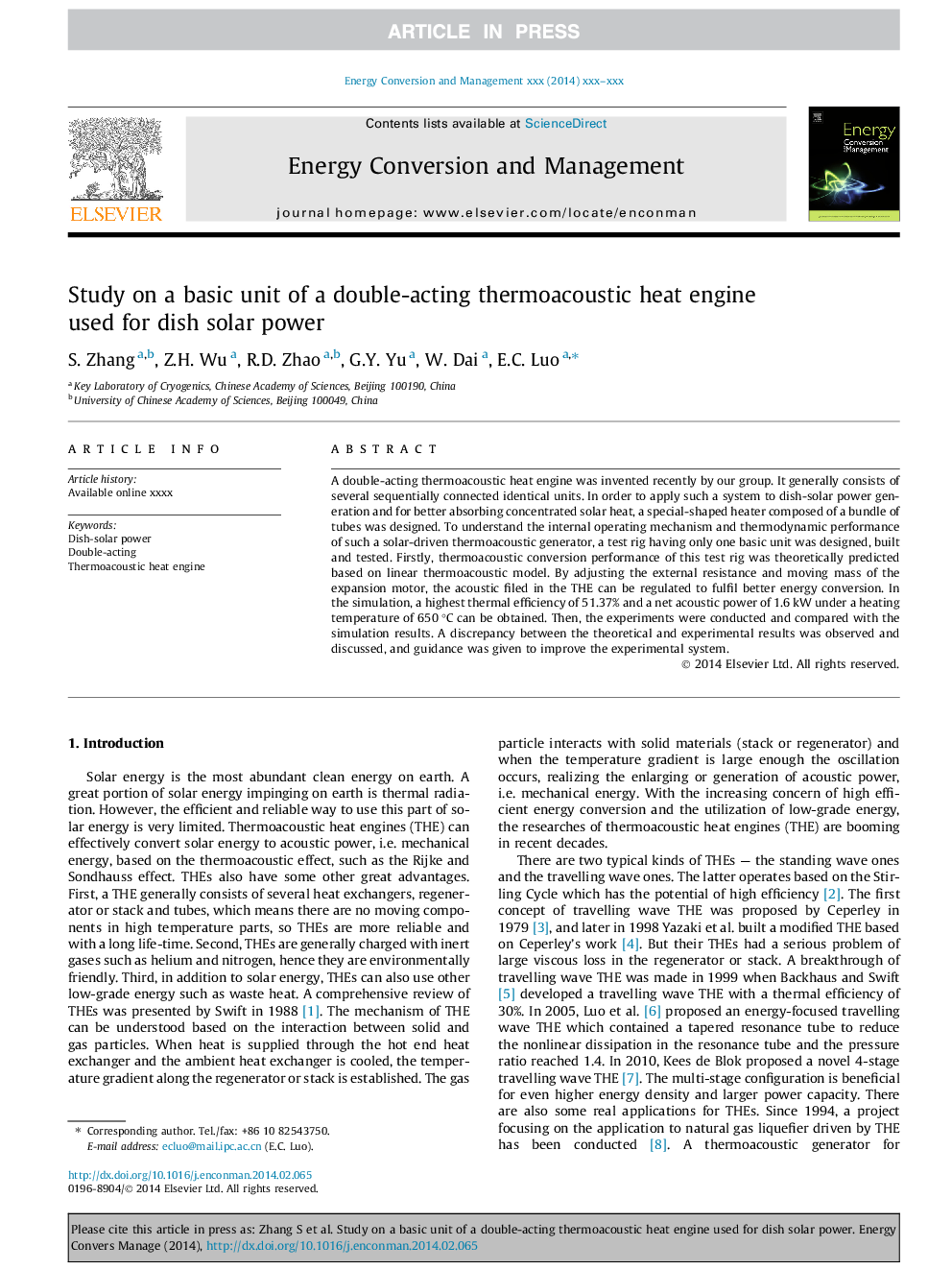| Article ID | Journal | Published Year | Pages | File Type |
|---|---|---|---|---|
| 7164645 | Energy Conversion and Management | 2014 | 9 Pages |
Abstract
A double-acting thermoacoustic heat engine was invented recently by our group. It generally consists of several sequentially connected identical units. In order to apply such a system to dish-solar power generation and for better absorbing concentrated solar heat, a special-shaped heater composed of a bundle of tubes was designed. To understand the internal operating mechanism and thermodynamic performance of such a solar-driven thermoacoustic generator, a test rig having only one basic unit was designed, built and tested. Firstly, thermoacoustic conversion performance of this test rig was theoretically predicted based on linear thermoacoustic model. By adjusting the external resistance and moving mass of the expansion motor, the acoustic filed in the THE can be regulated to fulfil better energy conversion. In the simulation, a highest thermal efficiency of 51.37% and a net acoustic power of 1.6 kW under a heating temperature of 650 °C can be obtained. Then, the experiments were conducted and compared with the simulation results. A discrepancy between the theoretical and experimental results was observed and discussed, and guidance was given to improve the experimental system.
Related Topics
Physical Sciences and Engineering
Energy
Energy (General)
Authors
S. Zhang, Z.H. Wu, R.D. Zhao, G.Y. Yu, W. Dai, E.C. Luo,
